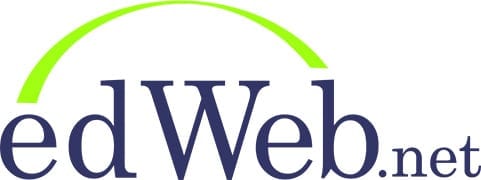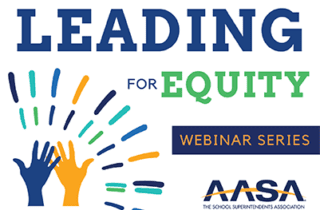“Despite decades of existing research, most professional development programs fail to adhere to established criteria for effectiveness. The Center for Public Education found that while over 90% of teachers reported that they engaged in some type of professional development during the year, most found it to be completely ineffective.” In a recent edWebinar, sponsored by ClassLink and co-hosted by CoSN and AASA, three district leaders from Wake County Public School System Superintendent Cathy Moore, Senior Director of Digital Learning and Libraries Allison Reid, and Marlo Gaddis, Chief Technology Officer, discussed critical guidelines for implementing successful professional technology development.
While equity requires vision from its leaders, it also requires courage. During the edWebinar, “Leading for Equity: Courage to Lead with an Equity Agenda,” hosted by AASA, The Superintendents Association and AASA’s Leadership Network, Dr. Khalid Mumin, Superintendent of Reading School District (PA), and Marlon Styles, Superintendent of Middletown City Schools (OH), discussed the challenges they faced and the tough decisions they made to keep their equity agenda moving forward.
Can a new type of curriculum actually turn failing schools into successful ones, and result in greater success for students as well? This question was answered affirmatively and with confirming evidence during a recent edWebinar, hosted by AASA, The Superintendents Association and AASA’s Leadership Network, with educator and author Jay McTighe, and the superintendent and deputy superintendent of Mount Vernon City School District (NY), Dr. Kenneth Hamilton and Dr. Jeff Gorman.
Equity is one of the most overused terms in education—not just because most can’t agree on a definition, but because the promise of equity is often not backed up by action. In the edWebinar, “Leading for Equity: Intentionality for Access and Opportunity,” hosted by AASA, The Superintendents Association and AASA’s Leadership Network, Dr. Gustavo Balderas, Superintendent of Edmonds School District (WA), and Dr. Heath Morrison, Superintendent of Montgomery Independent School District (TX), discussed how they’ve approached building equity throughout their careers and why acting upon an equity agenda is an urgent, right-now need.
Preparing all students for college and 21st century careers can no longer be the sole responsibility of K-12 educators. Increasingly, district administrators need to add another task to their already long checklists—forging partnerships with organizations that can supplement and enhance the education being provided by local schools.
Even before the COVID-19 pandemic led to changes in the traditional education model, there was widespread recognition that schools alone could not do everything needed to provide an equitable education for diverse students because so many factors that determine students’ success were being affected or determined outside of school.
With so many issues for school and district leaders to deal with during this difficult time, staying focused on students’ learning experiences may not always seem like the top priority. But district officials from Alabama and Minnesota, who are determined to provide an equitable education for all their students, recently explained how listening to students and taking action based on student input is a key factor in achieving successful outcomes.
These and other important lessons from Oregon’s Gresham-Barlow School District were discussed during a recent edWebinar, hosted by AASA, The Superintendents Association and AASA’s Leadership Network, with the district’s Superintendent, Dr. Katrise Perera, and Assistant Superintendent of Curriculum, Instruction, and Assessment, Lisa Riggs. Gresham-Barlow’s school leaders explained how they have been able to increase and sustain engagement in district activities, and how this has led to improved outcomes for the students.
Now that the 2020-21 school year is underway, district leaders must continue to respond in new ways to fast-changing situations resulting not just from COVID-19, but also from equity issues, and in many locations from environmental problems as well.
Large school districts in different parts of the United States have now developed systematic ways to increase diverse students’ access to advanced courses, and the districts are also providing other important aspects of an equitable education that prepares the students for 21st century careers.




